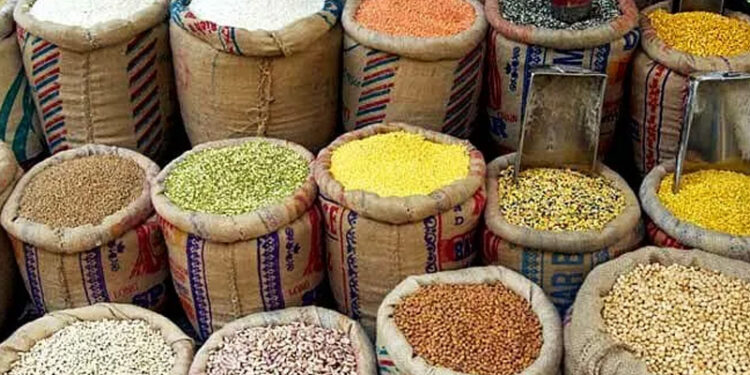Overview of the Latest Inflation Figures
The latest report from the Pakistan Bureau of Statistics (PBS) has revealed a 0.05% weekly increase in the country’s inflation rate. While the change might appear small, the impact on household budgets remains significant, as essential food items and everyday commodities continue to fluctuate in price.
On an annual basis, the inflation rate has been recorded at 1.73%, signaling persistent economic pressures affecting consumers across the nation.
The PBS weekly price review, which tracks the Sensitive Price Indicator (SPI), provides a detailed breakdown of price changes for 51 essential commodities. Out of these items, 12 became more expensive, 12 witnessed a decline in prices, while 27 items remained stable during the review week.
Items That Became More Expensive
According to the PBS data, a range of staple foods and basic necessities experienced price hikes, increasing the burden on households already grappling with high living costs.
Key Increases in Food Items
- Onions – Prices surged by 16.53%, driven by supply shortages in local markets. Seasonal factors and transportation disruptions have further tightened supply.
- Tomatoes – Prices rose by 10.17%, partly due to reduced supplies from producing regions and increased transportation costs.
- Chicken (broiler) – Recorded an increase of 4.12%, influenced by higher feed costs and supply chain constraints.
- Eggs – Witnessed a noticeable rise, attributed to seasonal demand and increased poultry production costs.
- Lentils (masoor) – Prices climbed due to import cost fluctuations and rising fuel charges affecting transportation.
- Tea (imported brands) – Imported tea prices rose in response to currency depreciation and global market rates.
- Fresh milk – Increased due to higher fodder prices and fuel costs for transportation.
- Diesel fuel – Price adjustments in the petroleum sector affected transportation and overall commodity costs.
- Cigarettes – Increased prices followed recent tax adjustments and higher production costs.
- Firewood – Demand rose as rural and semi-urban areas rely heavily on firewood for cooking, pushing prices upward.
- LPG (in select markets) – Some regions saw higher rates due to logistical costs.
- Miscellaneous grocery items – Including locally produced packaged goods affected by rising manufacturing costs.
Items That Became Cheaper
While 12 essential items saw price hikes, another 12 items witnessed a decrease in prices during the week, offering some relief to consumers.
Notable Price Declines
- Bananas – Prices dropped due to improved supply from local farms.
- Lentils (moong) – Witnessed a decline as fresh stocks entered wholesale markets.
- Potatoes – Better supply from Punjab reduced prices.
- Sugar – Fell in some regions due to improved supply from mills and market intervention.
- Garlic – Prices eased as imports stabilized.
- Rice (varieties) – Seasonal harvesting brought down market rates.
- Flour (20-kg bag) – Government interventions and subsidies in some provinces helped bring prices down.
- Liquefied Petroleum Gas (LPG) – Despite regional increases, national averages reflected a slight decrease due to better import arrangements.
- Petrol – Price adjustments at the federal level provided temporary relief.
- Ghee (in some markets) – Competition among brands reduced retail rates.
- Pulses (chana) – Local production and reduced demand helped ease prices.
- Seasonal vegetables – Including spinach and green chilies in some markets.
Items with Stable Prices
The prices of 27 essential items remained unchanged during the review period. This category included wheat, certain cooking oils, bread, beef, mutton, salt, and basic spices. The stability in these prices, while positive, does not fully offset the impact of rising prices in other key commodities.
Impact on Household Budgets
Even a 0.05% weekly increase in inflation can have significant implications for lower and middle-income families, particularly in urban areas where household budgets are already stretched.
The sensitive price index (SPI) focuses on commodities most relevant to low and middle-income groups, making the findings particularly concerning for policymakers and economists.
With onions, tomatoes, and chicken — staple ingredients in most Pakistani households — becoming more expensive, the average family’s weekly grocery bill is expected to increase noticeably.
Regional Price Variations
The PBS report highlighted significant regional disparities in commodity prices. For example:
- Sugar was being sold at up to Rs 173 per kilogram in Islamabad, Rawalpindi, and Lahore, compared to lower rates in smaller towns.
- Onions and tomatoes saw steeper increases in northern urban centers compared to southern markets.
- Fuel prices showed minor variation across provinces, but transportation-dependent commodities reflected those cost differences sharply.
Causes Behind the Price Fluctuations
Seasonal Factors
Many vegetables and fruits are subject to seasonal availability. The price spikes in onions and tomatoes align with transitional periods between crop harvests, when supply dips temporarily.
Fuel and Transportation Costs
The increase in diesel prices during the review week has a cascading effect on commodity costs, as goods transportation becomes more expensive, impacting retail prices nationwide.
Global Market Influence
Commodities like tea and lentils are heavily influenced by international market rates and exchange rate fluctuations. The depreciation of the Pakistani rupee against the US dollar continues to push up the cost of imported goods.
Supply Chain Disruptions
Extreme weather events, road blockages, and political instability in some areas have disrupted the smooth transportation of goods from rural production zones to urban consumption centers.
Government Response and Economic Outlook
The government has been closely monitoring inflation trends, particularly for essential food items. Measures under discussion include:
- Expanding utility stores network to provide subsidized rates for essential commodities.
- Increasing market inspections to prevent hoarding and profiteering.
- Strengthening import supply chains for goods like lentils, tea, and cooking oil to stabilize prices.
Economists, however, warn that without addressing structural issues — such as agricultural inefficiencies, storage limitations, and fuel dependency — price fluctuations will remain frequent.
Public Reaction
Public frustration over rising prices remains high. Social media users have voiced concerns about the affordability of everyday food items, urging authorities to take stronger action.
Small business owners, particularly in the food and catering sector, have reported shrinking profit margins as raw material costs increase faster than they can adjust menu prices.
Conclusion: Navigating the Price Challenges
The PBS report’s findings underline the fragile nature of Pakistan’s price stability, where even minor percentage increases have tangible effects on the cost of living.
While the government is taking steps to address short-term price hikes through subsidies and market regulation, long-term stability will depend on:
- Boosting local production.
- Improving agricultural storage and distribution systems.
- Reducing dependency on imports for key food items.
- Stabilizing fuel prices to cut transportation costs.
For now, Pakistani households will need to navigate a mixed market landscape — with some relief from falling prices in certain items but sustained pressure from rising costs in others.
If inflationary trends are not addressed proactively, the weekly grocery trip could remain a challenging balancing act for millions of families across the country.

























